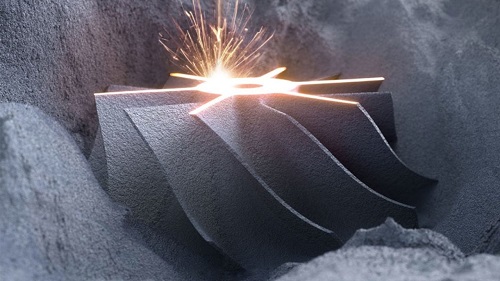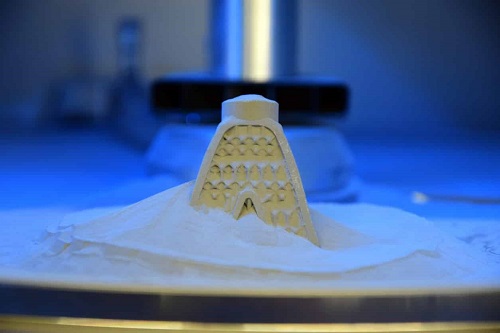Additive Manufacturing (AM) has emerged as a
pivotal domain in the progression of industrial technology, offering innovative
solutions for complex component manufacturing. However, traditional metal 3D printing methods
have been hindered by the need for support structures, which can complicate the
production process and add to the overall cost. This has led to the exploration
and development of minimal support or support-free alternatives that promise to
revolutionize the industry.

Principles and Characteristics of No
Support Metal 3D Printing
Laser Powder Bed Fusion (LPBF) is a key
technology in the field of minimal support metal 3D printing. It involves the
use of a laser to selectively melt and fuse metal powders layer by layer,
building up a part from the ground up. The absence of support structures in
this process is a significant advantage, as it eliminates the need for
additional steps to remove these supports, reduces material waste, and simplifies
the post-processing phase. According to a study published in Science,
the presence of powder in the LPBF process can lead to variations in the
porosity boundary, which is sharp and smooth in the power-speed (P-V) space,
indicating the potential for high precision and control in the printing process.[1]
The features that distinguish minimal
support metal 3D printing include the ability to produce intricate geometries
that would be impossible or highly challenging with conventional manufacturing
methods. This is due to the precision with which the laser can melt the powder,
allowing for high-resolution and detailed part production. Furthermore, the
surface quality of the final product is often enhanced, as the absence of
supports reduces the need for extensive finishing work.
Innovative Achievements and Future Trends
The advancements in materials, equipment,
and processes have been remarkable. Researchers and engineers have expanded the
range of metals suitable for LPBF from titanium and aluminum to more exotic
alloys with unique properties. The equipment has also seen significant
improvements in terms of precision, speed, and reliability. For example, the
Fraunhofer Institute for Production Technology (IPT) has been working on
optimizing the LPBF process chain and integrating it into hybrid production
processes, which can lead to significant improvements in production efficiency
and cost-effectiveness. [2]
Looking ahead, one of the most exciting
trends is the intelligent integration of LPBF into hybrid production processes.
This involves combining additive manufacturing with traditional subtractive and
formative processes to optimize production efficiency and cost-effectiveness.
For instance, semi-finished products can be pre-machined or cast and then additively
enhanced using LPBF to achieve complex geometries that would otherwise be
unattainable.
Another promising area is multi-material
printing, which allows for the fabrication of components with varying material
properties within a single build. This can lead to parts that are not only
lighter but also stronger and more functional, catering to the demands of
industries such as aerospace, automotive, and medical. The development of
multi-material printing is particularly relevant for these industries, where
components often need to fulfill multiple functions and withstand diverse
environmental conditions.[3]

Get Ready to
Know More at TCT Asia 2024
The TCT Asia 2024 will be held from May 7th to 9th at the National Convention and
Exhibition Center (Shanghai) Hall 7.1 & 8.1. As the leading exhibition in
Asia's additive manufacturing industry, TCT Asia 2024 will showcase the latest
3D printing technologies and applications, including material technology,
supporting equipment, digital modeling, and 3D printing services.
During
the exhibition, visitors will have the opportunity to experience first-hand the
innovative achievements of leading companies such as Farsoon Hi-Tech, such as
the 16-laser and metal additive manufacturing system FS1521M for mass
production of oversized parts. To ensure a smooth visit, please make a
real-name reservation through the official website in advance to enjoy the free
ticket discount. For more details, please follow our Facebook page.
Conclusion
The advancements in minimal support metal 3D
printing, particularly LPBF technology, have opened up new horizons for
manufacturing. The elimination of support structures, the ability to produce
complex geometries with high precision, and the potential for intelligent
integration and multi-material printing make this technology a promising avenue
for future industrial applications.
As we look forward to TCT 2024 and beyond,
it is clear that minimal support for metal 3D printing will continue to play a
crucial role in shaping the future of manufacturing, enabling the production of
components that push the boundaries of design and functionality.
Footnotes
[1] Zhao, C., Rollett, A. D., & Sun, T.
(2020). Critical instability at moving keyhole tips generates porosity in laser
melting. Science, 370(6520), 1080-1084. Link
to the paper
[2] Fraunhofer Institute for Production
Technology (IPT). (n.d.). Homepage. Link to the IPT website
Join us at TCT Asia, connect with industry innovators as you explore the entire AM ecosystem including design, materials, hardware, software, post-processing, and quality. 10,000+ professionals will unite to hear about the latest trends, explore the latest immersive AM technologies and find solutions to their AM challenges. Make sure you are there too.

TCT ASIA 2024
Tuesday 7th May 09:00 - 17:30
Wednesday 8th May 09:00 - 17:30
Thursday 9th May 09:00 - 15:00
NECC(Shanghai)7.1&8.1H